Dominique Luchart's Blog, page 746
April 27, 2020
The Samsung Galaxy Watch Active hits an all-time-low of $120 – CNET
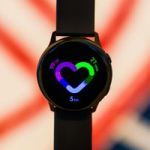
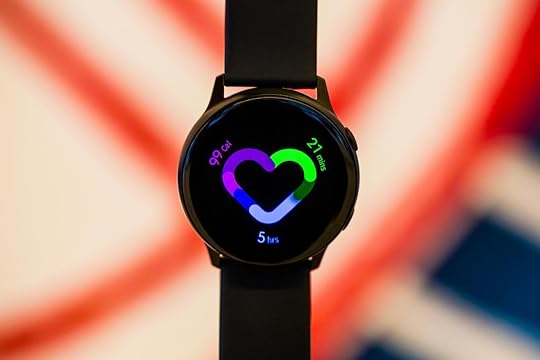 Originally $200, the Samsung Galaxy Watch Active is a great deal at $120.
Originally $200, the Samsung Galaxy Watch Active is a great deal at $120.Angela Lang/CNET
I’m not sure why, but smartwatch deals are coming fast and furious right now. Fossil’s Wear OS-powered Gen 4 Explorist was down to $99 a couple weeks ago (it’s still available for $119), and Apple’s Watch Series 5 was briefly $100 off. Now we have this: For a limited time, and while supplies last, the Samsung Galaxy Watch Active is down to $119.99 — the lowest price on record.
That’s for the black model; you can also get it in rose gold for the same price. (Mother’s Day, anyone?) If Amazon runs out or you see a price jump, try Best Buy, which also has it for $119.99 and offers a few more color options as well.
The Galaxy Watch Active hit the scene about a year ago, and while it’s already been supplanted by the Active 2, it’s still a perfectly good wearable — especially at this price.
I haven’t used one myself, so I’ll direct you to Vanessa Hand Orellana’s Galaxy Watch Active review. She liked it a lot, though with a few small gripes. Remember, though, that the review was based on a $200 price tag.
The watch is compatible with both Android and iOS devices, though if you own an iPhone you’ll lose out on a few features.
Already wearing a Galaxy Watch Active? Hit the comments and share your thoughts about it!
Read more: The best smartwatches for 2020

Now playing:
Watch this:
Galaxy Watch Active is a lighter, cheaper take on the…
6:56
THE CHEAPSKATE NEWSLETTER
CNET’s Cheapskate scours the web for great deals on tech products and much more. For the latest deals and updates, follow the Cheapskate on Facebook and Twitter. Find more great buys on the CNET Deals page and check out our CNET Coupons page for the latest promo codes from Best Buy, Walmart, Amazon and more. Questions about the Cheapskate blog? Find the answers on our FAQ page.
The post The Samsung Galaxy Watch Active hits an all-time-low of $120 – CNET appeared first on NEWDAWN Blog.
Top video doorbell cameras for 2020 – CNET

Video doorbells are a relatively new smart home category, but they closely overlap with standard home security cameras. They are, in fact, doorbells with built-in security cameras.
With doorbell cameras, your guests will ring the buzzer just like they normally do, but you’ll get real-time alerts on your phone and a live video look at whoever’s there (in addition to a regular ol’ chime sound). You and your guest can then chat via a built-in speaker and microphone in the doorbell. In some cases, the device will also work with smart locks so you can let the person in without physically opening the door yourself.
Most of the best video doorbell options today are Wi-Fi-enabled and offer features such as a rechargeable battery, two-way communication, a video feed and recording, along with the traditional doorbell button. But the designs, video quality, video storage subscriptions and general installation of each doorbell cam can vary a lot. Below in our doorbell reviews, we’ve highlighted our favorite models, and we’ve explained exactly how we test video doorbells, too. If you’re looking for the best video doorbell, chances are it’s among those we’ve tested.
The best video doorbells we’ve tested
Best overall video doorbell
Arlo Video Doorbell
Tyler Lizenby/CNET
EDITORS’CHOICE
Arlo’s $150 Video Doorbell cam is easy to install, performs well and has competitive features and cloud storage fees, starting at $3 per month. With a cloud storage subscription, you get access to advanced functionality like custom person, animal, vehicle and package alerts.
The Arlo Video Doorbell, our pick for best video doorbell overall, also features a built-in siren, two-way audio, motion detection zones and arm/disarm modes.
Read more about the Arlo Video Doorbell.
Best value
Arlo Video Doorbell
Tyler Lizenby/CNET
EDITORS’CHOICE
Arlo’s Video Doorbell isn’t cheap, but this device offers an excellent overall value. For $3 per month you get access to advanced doorbell cam features like person, animal, vehicle and motion alerts. The camera also has arm/disarm modes, two-way audio, motion zones and a built-in siren, just like the Arlo Pro 3 outdoor security camera.
Read more about the Arlo Video Doorbell.
Best features
Nest Hello
EDITORS’CHOICE
Mar 2018
In addition to the basics such as 1080p HD video footage live streaming and motion detection and alerts, the Hello camera also offers free person detection. Person detection won’t tell you who’s at the door (not facial recognition — more on that below), but it will tell you it saw a person. For a monthly or yearly fee, you can also upgrade to the Nest Aware cloud storage subscription service. Along with access to saved HD video recordings (hello excellent video quality), this service adds that aforementioned facial recognition.
More video doorbell options
Arlo Audio Doorbell
August Doorbell Cam Pro
August View
Blink Video Doorbell (not yet available)
Remo+ RemoBell
Remo+ RemoBell S
Ring Peephole Cam
Ring Video Doorbell (see Editors’ note, below)
Ring Video Doorbell 2
Ring Video Doorbell Pro
SkyBell HD Wi-Fi Video Doorbell
Soliom Video Doorbell
How we test video doorbells
Testing a smart doorbell is similar to testing any other home security camera. First I download the corresponding app and create an account (if I don’t already have one). While a lot of products include tutorial booklets in the box with your purchase, I prefer to start with the app. A good app includes detailed steps on the installation process, as well as how to connect to your Wi-Fi network and actually get the device up and running. It’s your one-stop shop for taking your doorbell setup from start to finish.
Make sure the doorbell is installed based on the manufacturer’s specifications — either hardwired or battery- or solar-powered. As soon as it’s connected and I’m able to view the live video feed, I check the settings. I make sure features like motion detection or activity zones are enabled (they aren’t always enabled as a default) to get a complete sense of what it’s like to use the product — and to see how well the device actually works as a replacement to a regular, nonsmart doorbell.
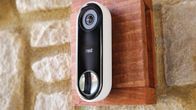
Now playing:
Watch this:
Nest Hello video doorbell: Smarter than your average…
2:39
What to look for
Does it work with smart home platforms? If so, do they work well? Nowadays smart home devices are expected to work with at least one major smart home platform — Amazon Alexa, Google Assistant and Apple HomeKit are the main ones you need to look for.
How’s the latency? If your smart doorbell camera takes a long time to get a push alert after someone rings your doorbell, then you risk missing your visitor completely. The same might even be true when the doorbell simply detects motion — you can set the motion sensor of most video doorbells to notify you to activity happening near your door, even if no one rings the buzzer.
If you have latency problems, start with your Wi-Fi connection. If it isn’t strong where the doorbell is installed, you might consider moving it (or, more easily, getting a Wi-Fi range extender). But it could also be the way the software works.
How’s the live view? Doorbells are often exposed to direct sunlight, but many others are installed under porches, near shady trees and in all sorts of other settings. It’s important that the camera has night vision and can handle any of these scenarios so you don’t get stuck with a nonfunctioning product that can’t see faces under a porch.
How’s the two-way audio? If the doorbell’s microphone and speaker don’t work well, you’re going to have a tough time communicating with whoever’s there. I test this out multiple times to see how the doorbell’s audio sounds over my phone.

14 smart doorbells to watch over your front stoop
15 Photos
Originally published in 2018, this guide was extensively rewritten in 2019. The RemoBell S was most recently added as the best overall pick and the best value pick.
The best facial recognition cameras: And how we test them.
The best products of 2020: Hand-picked by CNET’s experts.
Read more:
Editors’ note, Dec. 19: Over 3,000 Ring customers have recently had their personal account information exposed, according to reports. We are removing all Ring products from recommendation.
The post Top video doorbell cameras for 2020 – CNET appeared first on NEWDAWN Blog.
SpaceX Starship prototype passes crucial test, moves closer to flight – CNET

 Enlarge ImageElon Musk shared a view of SN4 Starship on the Texas test stand on April 23.
Enlarge ImageElon Musk shared a view of SN4 Starship on the Texas test stand on April 23.Elon Musk
We may see a new SpaceX Starship prototype get off the ground before too long.
SpaceX has been churning out test versions of its stainless-steel, next-generation spacecraft. The latest iteration, dubbed SN4, passed a critical cryogenic pressure test over the weekend. Previous prototypes, including the SN3 earlier this month, have crumpled under the demanding task, which involves pumping the vehicle full of liquid nitrogen.
Elon Musk, founder and CEO of SpaceX, tweeted about the progress on Sunday night. A short video showed SN4 looking very frosty on the test stand at SpaceX’s Starship facility in Texas. The aerospace manufacturer and space transportation company is based in Hawthorne, California, but has development, testing and launch sites across the US.
Musk has big plans for Starship that include a trip around the moon and eventual journeys to Mars. But first the spacecraft must make it through a series of tests much closer to Earth.
The next task will be to install a Raptor engine on the vehicle with an eye to sending it on a short “hop.” This may look similar to a test hop of a very early prototype in 2019.
SpaceX is working toward the bigger goal of a Starship orbital flight that will launch the craft into space.
In addition, SpaceX is already assembling the next test Starship, SN5. Delays and setbacks are common during spacecraft development, but SpaceX appears intent on keeping its momentum going through rapid prototyping.
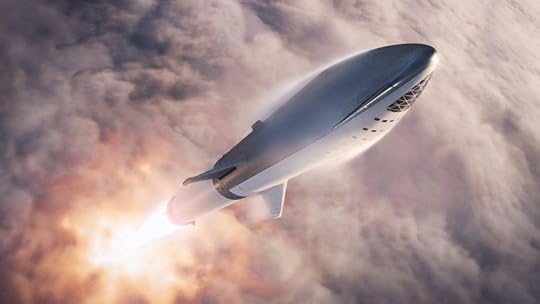
Elon Musk shows off the shiny SpaceX Starship
28 Photos
The post SpaceX Starship prototype passes crucial test, moves closer to flight – CNET appeared first on NEWDAWN Blog.
Bill Gates says foundation putting ‘total attention’ on COVID-19 – CNET

 Enlarge ImageBill Gates and his foundation are focusing entirely on COVID-19.
Enlarge ImageBill Gates and his foundation are focusing entirely on COVID-19.James Martin/CNET
For the most up-to-date news and information about the coronavirus pandemic, visit the WHO website.
Microsoft co-founder Bill Gates has been at the forefront of the coronavirus pandemic, calling for a nationwide shutdown to curb the spread of the virus and providing millions for the global response to the outbreak. The Bill & Melinda Gates Foundation for years has worked to stop the spread of malaria, HIV and tuberculosis, but it’s now setting its sights on COVID-19.
Gates said the “foundation’s total attention” is on the coronavirus pandemic, according to an interview in the Financial Times Sunday. He also says the organization’s non-health-related work, such as higher education and K-12, has been switched to look at how to facilitate online learning.
The foundation released a statement Monday saying it’s still committed to its core areas, including reducing infectious disease, eliminating extreme poverty and improving US public education.
“While we’ve announced more than $250 million in funding to date and a commitment to leverage our Strategic Investment Fund toward the pandemic, we are increasingly focusing the expertise of our staff and leveraging our partnerships toward the urgent efforts needed to end this pandemic,” the foundation said. “These are unprecedented times, but our belief that all lives have equal value and our commitment to addressing inequities across all of our work remains more critical than ever.”
On April 15, Gates criticized President Trump’s decision to halt funding for the World Health Organization, saying the organization is needed “now more than ever.” The Microsoft co-founder has also been a target of coronavirus conspiracy theories, which make wild claims such as Gates being responsible for the creation of COVID-19 to cull the global population or that he would profit off a vaccine.

Now playing:
Watch this:
High-tech tools to detect coronavirus
1:23
The information contained in this article is for educational and informational purposes only and is not intended as health or medical advice. Always consult a physician or other qualified health provider regarding any questions you may have about a medical condition or health objectives.
The post Bill Gates says foundation putting ‘total attention’ on COVID-19 – CNET appeared first on NEWDAWN Blog.
Apple patent imagines adjustable tinted windows for your future car – CNET

 Imagine being able to tint windows on the fly.
Imagine being able to tint windows on the fly.Getty Images
Whether it’s to block sunlight and keep a car cooler or to keep curious eyes out of the cockpit, window tint is really the only way to accomplish those goals. Tint also requires a commitment to the darker shade, but a new Apple patent imagines a world where all of this happens instantly.
Filed with the United States Patent and Trademark Office on April 21, this patent describes a vehicle window with control circuitry and adjustable layers for tint, reflectivity and even haze. Apple’s patent describes a process where one or more of these layers fit between a pair of glass window layers and could work in one of two ways.
First, the technology giant says the system could work on its own as the system collects data and sensors adjust tint, haze and other elements automatically. Basically, imagine a cloudy day shifting to full-blown sun suddenly. These smart windows would shift, based on sensor data, to tint automatically. It also seems reasonable a vehicle owner could set parameters for when they want the tint to shift, remain full time and some other variables. The patent does describe some input-output devices that could also supply information, too. Second, the language suggests drivers or passengers could control all of the functions themselves.
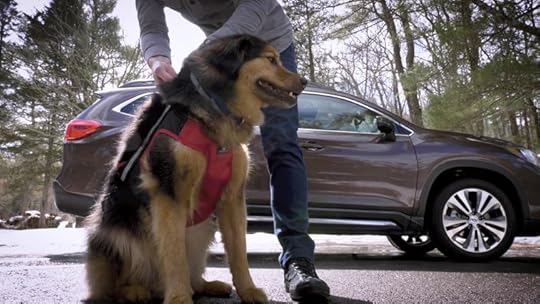
The best accessories to dog-proof your car
14 Photos
The wildest part of this patent talks about one-way functions. For example, perhaps a passenger wants to see clearly to the outdoors, but doesn’t want those outside to look in. The layers could shift to provide a milky view inward, but a crystal-clear view outward with haze functions. The same might be possible for tint options, too. Apple mentions cholesteric liquid crystals to accomplish quick switching speeds, depending on what a passenger wants in the moment.
Patents are never a sure-fire piece of evidence to conclude some sort of technology is production bound. That’s especially true for companies like Apple, which files thousands of patents. However, in recent years, we’ve seen more and more auto-related patents from Apple, which continue to feed rumors the tech giant has vehicle technology in mind for the future.

Now playing:
Watch this:
Smart car windows are coming
2:55
[image error]
More From Roadshow
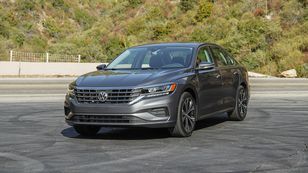
2020 Volkswagen Passat first drive: This is fine
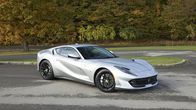
2019 Ferrari 812 Superfast review: Turned up to 12
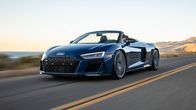
2020 Audi R8 Spyder first drive: A familiar thrill
The post Apple patent imagines adjustable tinted windows for your future car – CNET appeared first on NEWDAWN Blog.
UPS, CVS starting drone prescription deliveries in Florida this May – CNET
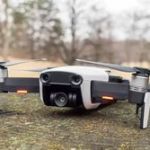
 Drones will be delivering medicine in Florida in May.
Drones will be delivering medicine in Florida in May.Joshua Goldman/CNET
For the most up-to-date news and information about the coronavirus pandemic, visit the WHO website.
Starting in May, Matternet’s M2 drones will start delivering prescription medicine to The Villages, a retirement community in central Florida that houses over 135,000 residents, making it the largest in the US. The team effort between CVS and UPS is meant to support social distancing efforts during the coronavirus outbreak and get medicine to those in need faster, according to a release from UPS.
“Our new drone delivery service will help CVS provide safe and efficient deliveries of medicines to this large retirement community, enabling residents to receive medications without leaving their homes,” Scott Price, UPS chief strategy and transformation officer, said in the release.
See also: Best drone for 2020: Everything you need to know
Plans to explore drone delivery were announced last year by the companies. UPS and CVS completed their first drone delivery of medical prescriptions in North Carolina last November.
“Now more than ever, it’s important that our customers have access to their prescriptions,” Jon Roberts, executive vice president and COO of CVS Health, said in the release.

Now playing:
Watch this:
How this drone can help stop the spread of coronavirus
3:48
The post UPS, CVS starting drone prescription deliveries in Florida this May – CNET appeared first on NEWDAWN Blog.
April 25, 2020
Mystery of Venus atmosphere’s weird rotation may finally be solved

The mystery behind why the atmosphere of Venus spins much faster than the planet’s surface may finally be solved, a new study finds.
The finding might help shed light on how habitable distant exoplanets, or worlds beyond our solar system, may actually be, researchers said.
Compared to Earth, Venus twirls at a leisurely pace on its axis, with its surface taking 243 Earth days to complete one rotation. However, the hot, deadly atmosphere of Venus spins nearly 60 times faster than its surface, whirling around the planet once every 96 hours, an effect known as super-rotation.
Related: The 10 weirdest facts about Venus
This mysterious phenomenon of atmospheric super-rotation is seen not just on Venus, but also on Saturn’s largest moon, Titan. Previous research suggested that in order for this super-rotation to occur, the atmosphere of Venus has to possess enough angular momentum — the amount of momentum a body has because of its spin — to overcome friction with the planet’s surface. However, it was uncertain what exactly the source of this angular momentum was.
[image error]
Artist’s illustration of Japan’s Akatsuki spacecraft at Venus. (Image credit: JAXA/Akihiro Ikeshita)To shed light on this mystery, scientists analyzed data from the Japanese space probe Akatsuki, which has orbited Venus since 2015. They focused on super-rotation in the cloud layer of Venus, where the rotation speed is highest, reaching about 245 mph (395 km/h) in the region surrounding the equator.
Based on ultraviolet images and thermal infrared data from Akatsuki, the scientists developed a way to track Venusian cloud motions in order to map the planet’s winds and the way heat circulated in the atmosphere. This helped give the researchers a picture of how angular momentum was distributed across the cloud-top level, located at about 42 miles (70 kilometers) in altitude. This in turn helped them estimate the forces sustaining the super-rotating atmosphere.
“Personally, our success at doing so was my biggest surprise,” study lead author Takeshi Horinouchi, a planetary scientist at Hokkaido University in Sapporo, Japan, told Space.com.
[image error]
This schematic illustration shows how the super-rotation of Venus’ atmosphere is maintained. (Click the top right corner to enlarge the image.) (Image credit: JAXA/PLANET-C Project Team)The scientists discovered the Venusian atmosphere received angular momentum though thermal tides, which are variations in atmospheric pressure driven by solar heating near the planet’s equator. They also found planetary-scale waves in the atmosphere as well as large-scale atmospheric turbulence worked against this effect from thermal tides.
“There was a suggestion that thermal tides might be contributing to the acceleration behind super-rotation, but I think the mainstream assumption was different, so this was a surprise,” Horinouchi said.
These findings may shed light on the habitability of tidally locked exoplanets — worlds that each have one dark side that always faces away from its star and one side that is bathed in constant sunlight. One might expect the daysides of these exoplanets would be hot and the nightsides would be cold, and that conditions for life as we know it might be most favorable in the twilight zone between these sides. However, super-rotation could balance the temperature differences between daysides and nightsides, Horinouchi said.
Future research can investigate how atmospheric super-rotation on Venus has remained stable over time, Horinouchi said.
The scientists detailed their findings in the April 24 issue of the journal Science.
Follow Charles Q. Choi on Twitter @cqchoi . Follow us on Twitter @Spacedotcom and on Facebook .
The post Mystery of Venus atmosphere’s weird rotation may finally be solved appeared first on NEWDAWN Blog.
Russian cargo craft launches toward space station

A Russian cargo spacecraft has begun its brief journey to the International Space Station (ISS).
The robotic Progress 75 freighter, which is packed with nearly 3 tons (2.7 metric tons) of propellant, food and other supplies, launched atop a Russian Soyuz rocket from Baikonur Cosmodrome in Kazakhstan today (April 24) at 9:51 p.m. EDT (0151 GMT and 6:51 a.m. local Baikonur time on April 25).
If all goes according to plan, the Progress will reach the orbiting lab just a few hours from now, at 1:12 a.m. EDT (0512 GMT) on April 25. You can watch coverage of the Progress’ arrival and docking operations live here at Space.com, courtesy of NASA TV, beginning at 12:30 a.m. EDT (0430 GMT).
Related: Russia’s Progress spacecraft: ISS supply ship
The arrival will mark the start of a long-term stay for the Progress; it’s expected to depart the ISS in December, NASA officials said. The freighter will therefore be on hand to help welcome SpaceX’s Crew Dragon capsule on its first-ever crewed flight, the Demo-2 test mission.
Demo-2, which will carry NASA astronauts Bob Behnken and Doug Hurley to and from the orbiting lab, is scheduled to launch on May 27. It will be the first orbital human spaceflight to launch from U.S. soil since NASA’s space shuttle fleet was retired in July 2011.
Progress is one of four robotic freighters that currently resupply the ISS, along with Japan’s H-II Transfer Vehicle and two private American spacecraft, Northrop Grumman’s Cygnus and SpaceX’s cargo Dragon. (SpaceX holds both cargo and crew deals with NASA.)
Three of these four vehicles are disposable, burning up in Earth’s atmosphere after they leave the orbiting lab. The exception is the reusable Dragon, which makes parachute-aided ocean splashdowns.
Three astronauts are living aboard the ISS at the moment: NASA astronaut Chris Cassidy, who commands the station’s current Expedition 63, and cosmonauts Anatoly Ivanishin and Ivan Vagner.
Mike Wall is the author of “ Out There ” (Grand Central Publishing, 2018; illustrated by Karl Tate ), a book about the search for alien life. Follow him on Twitter @michaeldwall . Follow us on Twitter @Spacedotcom or Facebook .
Join our Space Forums to keep talking space on the latest missions, night sky and more! And if you have a news tip, correction or comment, let us know at: community@space.com.
The post Russian cargo craft launches toward space station appeared first on NEWDAWN Blog.
30 years of Hubble: Space telescope’s legacy goes beyond science

Hubble is the people’s telescope.
The iconic observatory, which was deployed into Earth orbit by the space shuttle Discovery 30 years ago today (April 25), has fundamentally changed astronomers’ understanding of the universe.
For example, Hubble imagery showed that the universe’s expansion rate is accelerating, a surprising discovery that led to the postulation of dark energy, a mysterious repulsive force now thought to make up most of the cosmos.
Related: The best Hubble Space Telescope images of all time!
But the Hubble Space Telescope’s contributions extend far beyond the scientific sphere, into the everyday lives of regular people around the world. Anyone with an internet connection has probably seen at least a few of Hubble’s amazing photos, which bring the beauty and mystery of the universe down to Earth like no instrument ever had before.
Take Hubble’s famous “Pillars of Creation” shot, or its glorious portrait of the Crab Nebula. Even if you don’t really understand what you’re looking at — and most of us don’t — you’re probably moved in some way by such photos. You get a better appreciation of the wonders of the universe, even if you don’t engage in any overt deep thinking.
Hubble’s “spectacular images have captured the imagination for decades, and will continue to inspire humanity for years to come,” Thomas Zurbuchen, associate administrator for science at NASA headquarters in Washington, D.C., said in a statement.
Hubble’s considerable legacy includes other facets as well. Take the technical side: Hubble was the first big space-based optical observatory, and it remains a marvel of engineering.
For example, Hubble can stay locked on a target for long stretches with no more than 0.007 arcseconds of deviation. That’s equivalent to a person on top of the Empire State Building in New York City keeping a laser pointer’s beam focused on a dime taped to the side of the Washington Monument, 200 miles away (320 kilometers), for 24 straight hours, NASA officials said. And Hubble manages this while zooming around Earth at 17,500 mph (28,160 km/h).
Hubble, a joint project of NASA and the European Space Agency, was also the first telescope ever designed to be serviced in space by astronauts. And servicing is a huge part of the observatory’s story.
Astronauts repaired or upgraded the telescope on five separate shuttle missions, in 1993, 1997, 1999, 2002 and 2009. The first was probably the most important, for it fixed a serious problem with the highly anticipated scope: Hubble launched with a flaw in its primary mirror, which the mission team didn’t notice until the observatory was already aloft.
And that adds yet another layer to the legacy.
“This is just a great story,” former NASA astronaut Mike Massimino, who took part in the final two Hubble servicing missions, told Space.com. “It’s a comeback story, something everyone can relate to.”
As you’re soaking up Hubble images on this big anniversary weekend, take a moment to appreciate the mission and the thousands of scientists and engineers — and the handful of astronauts like Massimino — whose work made those photos possible.
And don’t take all that cosmic beauty for granted. Though Hubble has stitched itself into our cultural fabric, it won’t last forever.
Mike Wall is the author of “ Out There ” (Grand Central Publishing, 2018; illustrated by Karl Tate ), a book about the search for alien life. Follow him on Twitter @michaeldwall . Follow us on Twitter @Spacedotcom or Facebook .
Join our Space Forums to keep talking space on the latest missions, night sky and more! And if you have a news tip, correction or comment, let us know at: community@space.com.
The post 30 years of Hubble: Space telescope’s legacy goes beyond science appeared first on NEWDAWN Blog.
Space photos: The most amazing images this week!

The space picture that helped spark Earth Day, a famed space telescope celebrating 30 years in orbit, and an exoplanet that probably was misidentified. These are just some of the top space images this week on Space.com.
New moon geologic map will reveal more mysteries
[image error]
(Image credit: NASA/GSFC/USGS)Scientists at the United States Geological Service recently produced the most comprehensive geologic map of the moon. The digital map includes data from the last five decades, including the Apollo human moon missions that visited the moon in the 1960s and 1970s. The data will be useful to figure out more about the moon’s complex history; the prevailing scientific theory suggests the moon was formed from the debris of a Mars-sized body crashing into Earth billions of years ago.
Full story: Scientists use Apollo data to create the best geologic moon map ever
Hubble @ 30: The best images from the famed space telescope
[image error]
(Image credit: NASA/ESA/STScI)The NASA-European Space Agency’s Hubble Space Telescope has changed our view of the universe forever, and its images continue to captivate as the observatory reaches its 30th anniversary in space. Our photo gallery shows the best images Hubble has captured over the years, including galactic shots, planetary views and the famed “Pillars of Creation” showing an area of starbirth in the Eagle Nebula.
Full story: The best Hubble Space Telescope images of all time!
Arecibo captures masked asteroid en route past Earth
[image error]
(Image credit: Arecibo Observatory/NASA/NSF)An asteroid is going to fly by Earth harmlessly on April 29, and the Arecibo Observatory already has images of it. 1998 OR2 was captured on April 18, 2020, and staff (who are wearing masks and social distancing to reduce risk during the novel coronavirus pandemic) joked that the radar images revealed the asteroid itself is wearing a mask. The asteroid will zoom by Earth at 16 lunar distances, which is nowhere near a concern for our planet’s safety.
Full story: Big asteroid shows itself ahead of Earth flyby on April 29 (photo )
How an ‘exoplanet’ vanished from view
[image error]
(Image credit: (C) ESA/NASA, M. Kornmesser)A mystery of a disappearing exoplanet could be explained by one simple answer: there was never any exoplanet at all. Fomalhaut b was first spotted as a bright dot by the Hubble Space Telescope in 2004 and 2006, but disappeared from view a decade later. More recent research suggests the bright dot was the aftermath of an asteroid collision.
Full story: Mysterious ‘disappearing’ exoplanet was just a big cloud of asteroid trash, study suggests
How one picture of Earth helped spark the environmental movement
[image error]
(Image credit: NASA)Fifty years ago, the Apollo 8 crew was in orbit around the moon and Bill Anders captured an iconic image — our planet, rising above the barren lunar landscape. The image has since become a symbol of the environmental movement, as it showed how precious a jewel our planet is in barren space. One of the most visible milestones was the first Earth Day on April 22, 1970.
Full story: Earth Day at 50: How Apollo 8’s ‘Earthrise’ photo helped spark the first celebration
New planet-hunting telescope looks at first alien worlds
[image error]
(Image credit: ESA)Europe’s Characterizing Exoplanet Satellite (CHEOPS) observed its first alien worlds. Since the spacecraft is still in its commissioning phases, it focused on well-known star systems that were stable, with little signs of activity, just to make sure the satellites instruments were working correctly. CHEOPS, it turns out, is doing even better than predicted.
Full story: Europe’s planet-hunting CHEOPS telescope spies its 1st alien worlds
Follow Elizabeth Howell on Twitter @howellspace. Follow us on Twitter @Spacedotcom and on Facebook.
Join our Space Forums to keep talking space on the latest missions, night sky and more! And if you have a news tip, correction or comment, let us know at: community@space.com.
Join our Space Forums to keep talking space on the latest missions, night sky and more! And if you have a news tip, correction or comment, let us know at: community@space.com.
The post Space photos: The most amazing images this week! appeared first on NEWDAWN Blog.



